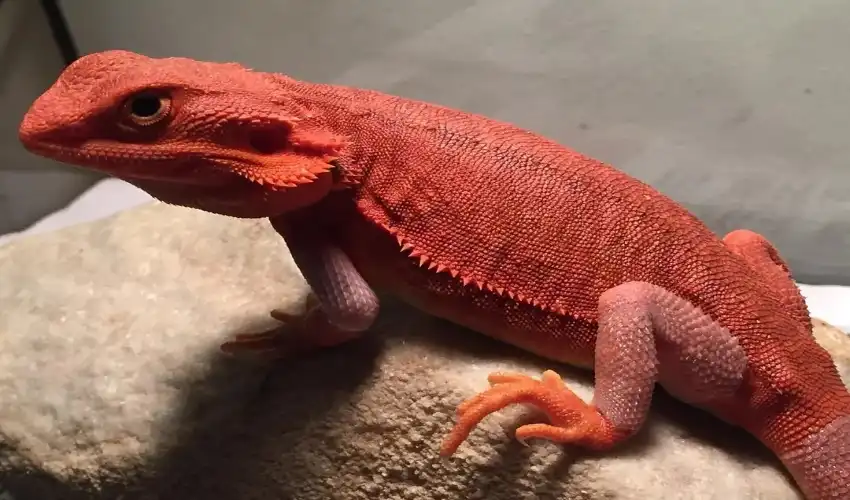Introduction
The Red Bearded Dragon, a strikingly beautiful and charismatic reptile, has piqued the interest of reptile enthusiasts around the world. With their vivid coloration and distinct personality, these dragons hold many secrets that make them a fascinating pet and study subject.
- Origin and Habitat
Red Bearded Dragons are a color morph of the central bearded dragon (Pogona vitticeps), native to the arid, warm regions of Australia. Understanding their natural habitat sheds light on their care requirements, such as their need for heat and UVB lighting, which are essential for their health and vitality. - Unique Physical Traits
Unlike their standard counterparts, buy red bearded dragon boast a range of vibrant red hues. This distinct coloration is a result of selective breeding, aimed at enhancing the red pigmentation. Their skin changes color based on mood, temperature, and even during social interactions, a trait that’s captivating to observe. - The Science Behind Their Color
The vivid color of the Red Bearded Dragon is linked to genetics and diet. Breeders carefully select dragons with strong red coloration to perpetuate the trait. The presence of specific carotenoids in their diet also contributes to the intensity of their red color. This is why it’s important for owners to provide a varied diet rich in color-enhancing nutrients. - Care and Maintenance
Maintaining a Red Bearded Dragon requires understanding their habitat needs, diet, and general well-being. These dragons thrive in well-regulated environments that mimic the Australian outback. This includes a warm basking area (around 95-110°F) and cooler resting spots, along with a source of UVB light. Their diet should include a balance of protein (insects) and leafy greens. - Feeding Habits and Dietary Secrets
Red Bearded Dragons are omnivores with a preference for a diverse diet. They relish a combination of live insects such as crickets and mealworms, along with leafy greens and vegetables. Adding specific fruits like strawberries or bell peppers occasionally can boost their red color. Supplements like calcium and vitamins are essential to prevent metabolic bone disease. - Behavioral Insights
One of the most intriguing secrets of the Red Bearded Dragon is their complex social and behavioral patterns. They are known to display unique behaviors such as arm-waving (a sign of submission), head-bobbing (often seen in dominance displays), and “beard” darkening, which signals stress or excitement. Observing these behaviors can provide owners with a deeper understanding of their dragon’s emotional state. - Health and Lifespan
Red Bearded Dragons have a lifespan of 8-12 years, given proper care. Regular health checks, a clean environment, and a balanced diet are vital. One of the less-known secrets is that stress and poor diet can lead to health issues like impaction or parasites. Maintaining optimal humidity levels and avoiding substrates like loose sand can mitigate such risks. - Breeding and Color Enhancement
Selective breeding has played a major role in developing the vivid red hues of these dragons. Breeders look for specific genetic traits to ensure the offspring display deep red pigmentation. Understanding the breeding process helps enthusiasts appreciate the effort that goes into producing these visually stunning reptiles.
Conclusion
The Red Bearded Dragon is more than just a pet; it’s a glimpse into the world of reptiles and their complex adaptations. Their striking appearance, coupled with fascinating behaviors, make them a favorite among reptile lovers. By understanding their origins, care needs, and unique traits, owners can ensure their Red Bearded Dragon leads a healthy and enriched life.
